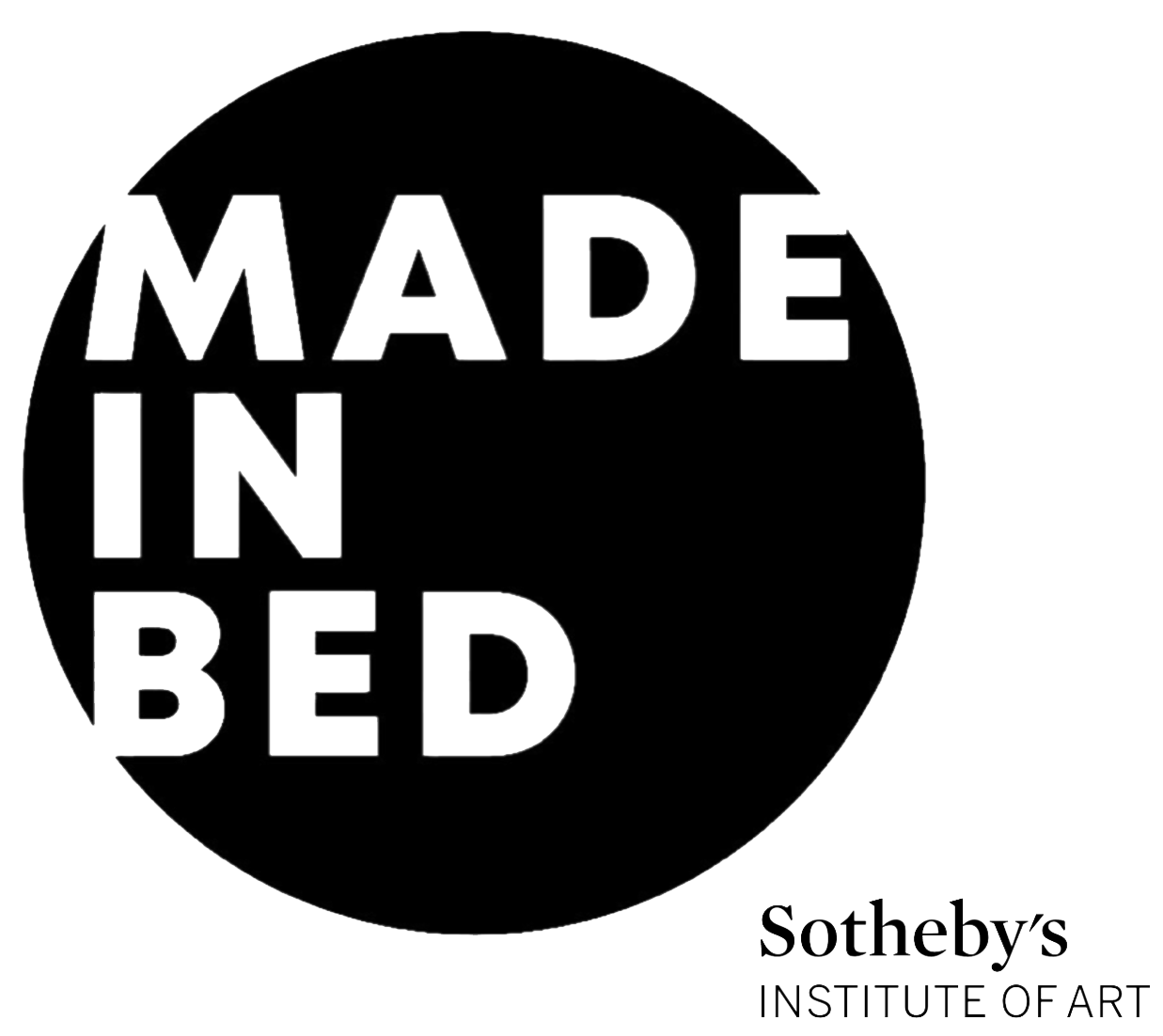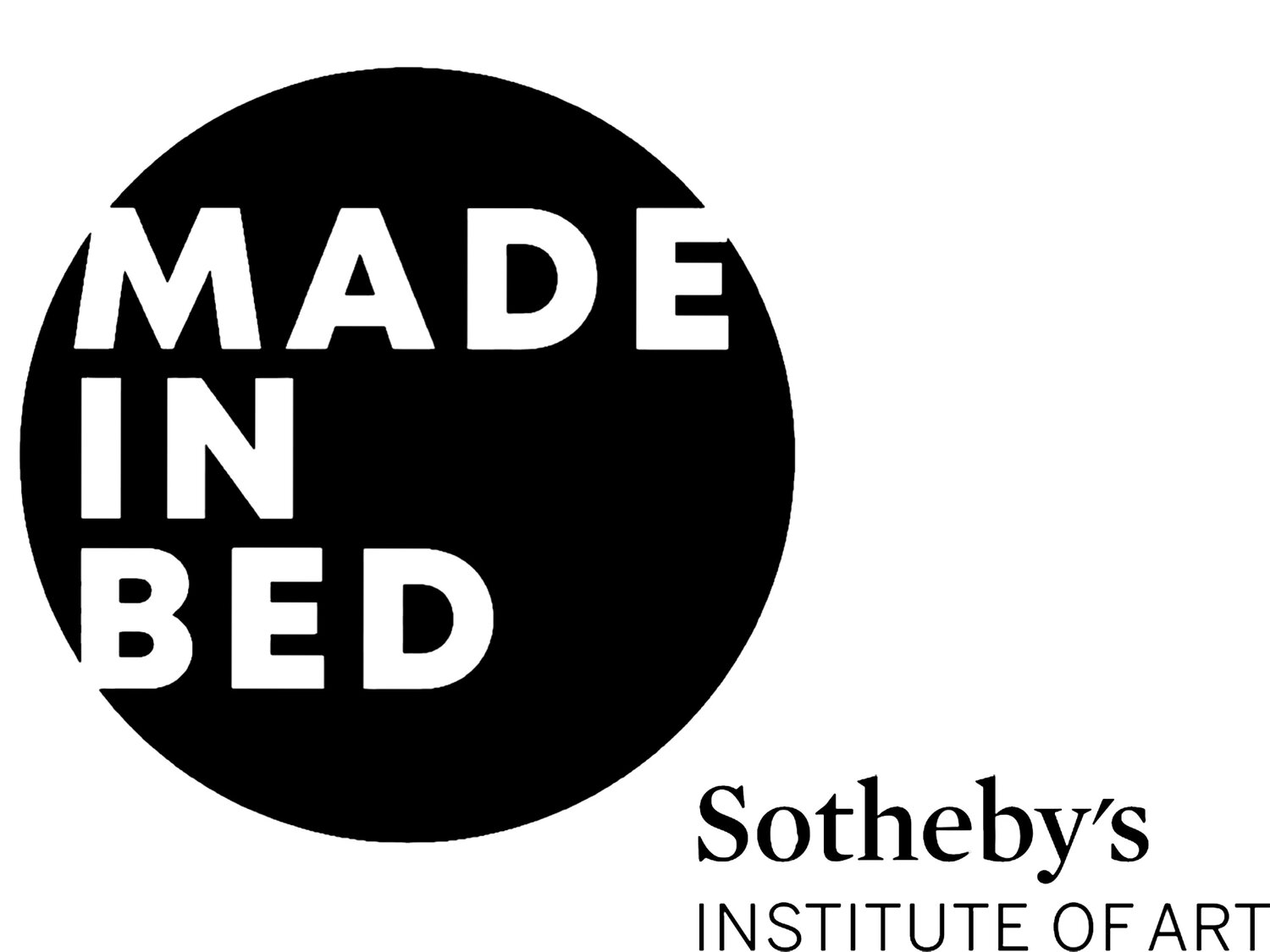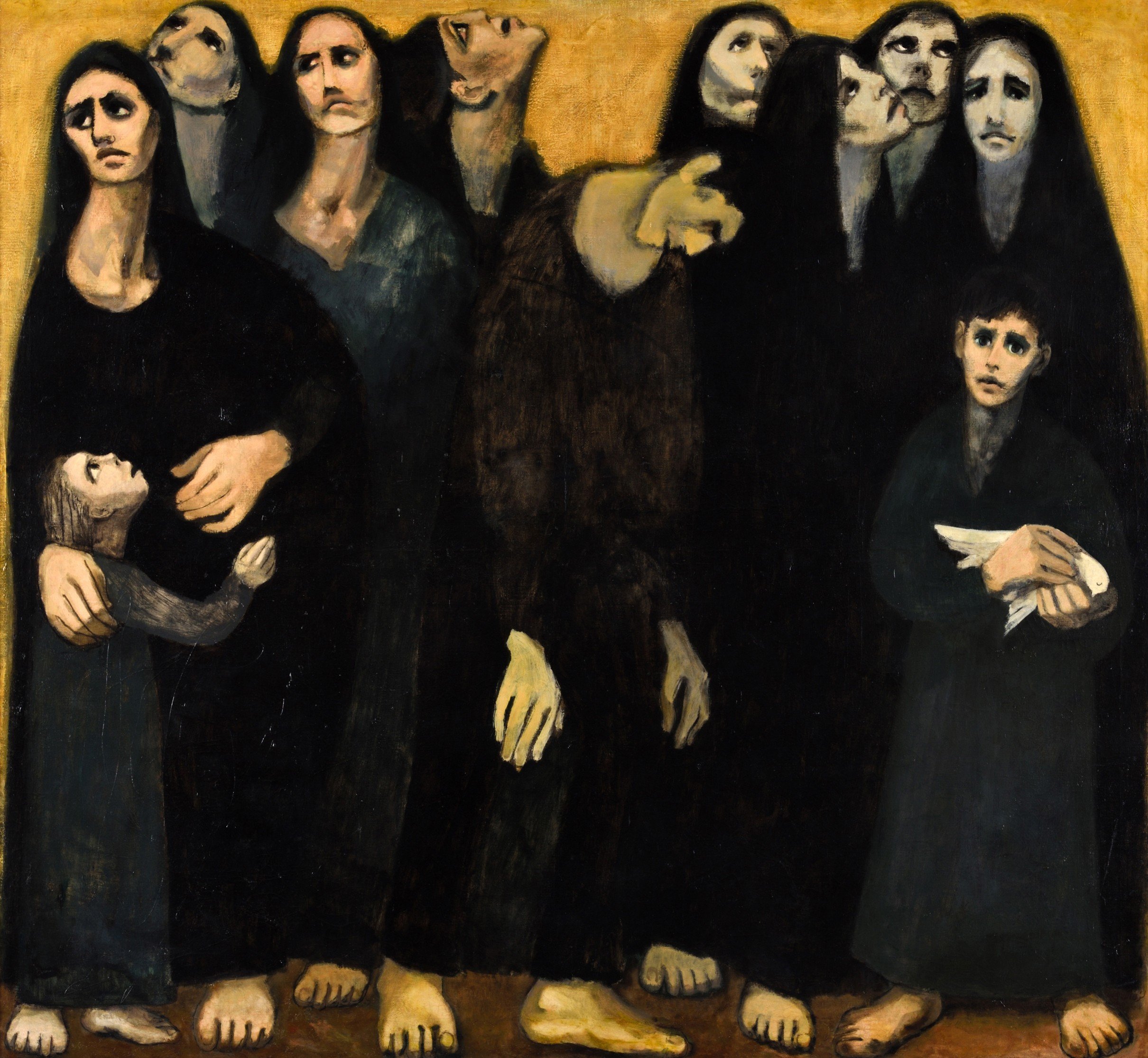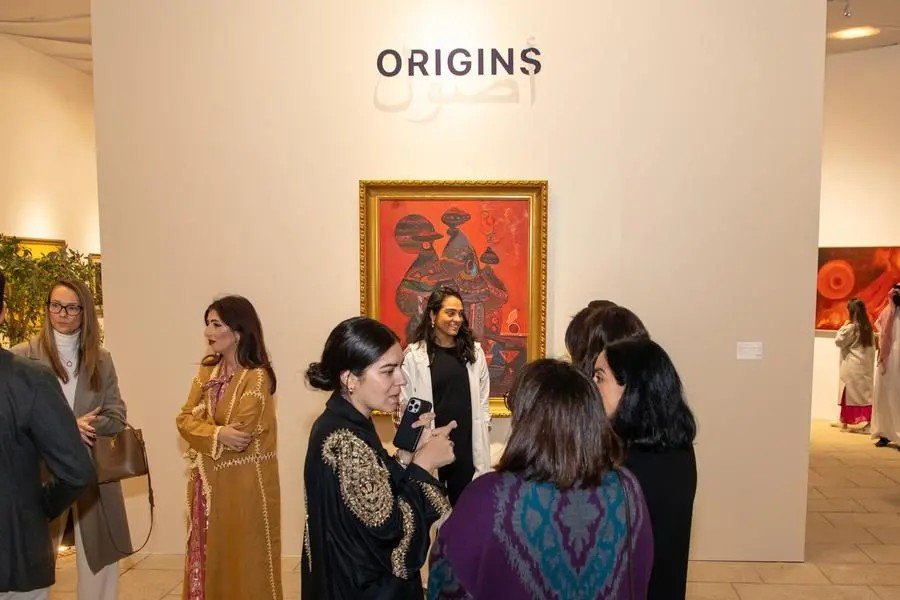Sotheby's 'Original' Auction: How are international players navigating Saudi Arabia's burgeoning art scene?
Photo Courtesy: Sotheby’s.
The 8th of February was a seminal day for art in Saudi Arabia, as Sotheby’s unveiled the Kingdom’s first international art and luxury auction in the historic town of Diriyah, on the outskirts of Riyadh. With sales totaling $17.28 million, Sotheby’s offered 117 lots including luxury items, sports memorabilia, and fine artworks by global and local heavyweights from Fernando Botero to Mohammed Al Saleem. Fine art, particularly Arab art, achieved promising results with works by Abdulhalim Radwi (Saudi Arabia), Louay Kayyali (Syria), Samia Halaby (Palestine) selling for above their high estimates.
Louay Kayyali, Then What? 1965. Lot 19. Photo Courtesy: Sotheby’s.
The auction, dubbed Origins, was curated by Saudi Arabian rower and art enthusiast Husein Alireza who represented the Kingdom at the 2024 Paris Olympics. Alireza’s international sporting success and recent collaboration with Sotheby’s reflects the seismic socio-cultural changes unraveling within the Kingdom as part of Vision 2030. Launched in 2016 by crown Prince Mohammed Bin Salman (known as MBS), this trillion-dollar initiative aims to diversify the country’s economy beyond oil through strategic state-led investments in various sectors including technology, sports, and the topic of this article—arts and culture. Whilst Vision 2030 is catalyzing a cultural boom and positioning Saudi Arabia as an international arts hub, the Kingdom remains a topic of contention and contradiction. Can this cultural Renaissance take place in tandem with the concentration of authoritarian power and conservatism? And, will the nation have to forfeit its own cultural identity to be granted access to the global art ecosystem?
Photo Courtesy: Sotheby’s
The term ‘origins’ suggests the beginning or source of something. Given that the auction in question was a first for both Sotheby’s and the Kingdom, the name is fitting. International auction houses, like Sotheby’s, play a pivotal role in the development of art markets; the convergence of sales infrastructure with an ecosystem of emerging artists and aspiring collectors has the power to truly galvanize national art markets. [1] Sotheby’s recent move to the region does signal Saudi Arabia’s solidifying position as an emerging art market and ecosystem. However, ‘origins’ also speaks to deeper preconceived notions of Saudi Arabia, and the wider Gulf region, as a ‘tabula rasa’ or a blank slate devoid of culture prior to western recognition and investment. In her dissertation entitled ‘Gulf in Focus’, Sotheby’s Institute alumni Federica Potenza draws on Elizabeth Derderian whose research focuses on the ‘Gulf’s compulsion to sanitize, translate, and codify its own practices into western paradigms in order to establish and retain international visibility’.[2] The importation of internationally recognized auction houses and museum franchises like the Louvre and Guggenheim points to what art critic Barbara Pollack has described as a ‘Euro-American blueprint’. [3] By implementing or imitating western models, the Gulf appears to establish legitimacy in an international context; positioning itself as a credible player in the global art ecosystem and attractive cultural destination.
However, unlike other Gulf nations like the UAE, Saudi Arabia’s program of socio-economic reform is in-part, or at best largely, directed toward its own population, 63% of which are under thirty years old. The Ministry of Culture, established in 2018 as part of Vision 2030, is not just importing western institutions into the region, they are simultaneously attempting to re-invigorate, preserve, and promote the nations traditional heritage. In an interview with Rebecca Proctor, senior advisor to the Ministry of Culture, Maha Al-Senan, stated that the Kingdom is utilizing art as ‘a way to forge [its] own artistic and cultural voice and share it both nationally and internationally’.[4] In short, the Kingdom is using art as a form of soft power to promote national identity and encourage dialogue with the world. When discussing arts and culture in this context, it’s important to recognize that Saudi Arabian art and visual culture has much older roots than what is often presented on the contemporary art scene. Pre-Islamic rock carvings in Al’Ula and Jubbah narrate the rich history of the region; a cultural crossroad for countless civilizations, while Islam’s anti-figurative stance led to a rich tradition of calligraphy, geometry, and non-representational art. However, as Al-Senan states: ‘Art in its modern style in the Kingdom does not reflect the traditional evolution of Saudi Arabia and was highly influenced by Western practice’. Many of the teachers and art practitioners operating in the 1960’s and 70’s (a period when Saudi was enjoying the wealth of its oil boom and remained relatively open to the world) came to the country from British colonies like Egypt and Palestine, bringing with them modern art in accordance with Western schemata.
It's also crucial to acknowledge that the art in Kingdom is a reflection of its wider socio-political context and whilst the dominant narrative of progressive enlightenment is appealing, the history of art in Saudi Arabia ‘has been a nonlinear journey, punctured and stalled’.[5] At the heart of this socio-political context lie ever present tensions between the twin powers of state and religion. Following a culturally fertile era in the 1960’s and 70s, Saudi experienced a time of social and religious conservatism that transformed life for a whole generation and curtailed creative freedom. Modernization was called into question across the Middle East—in Iran and Afghanistan—and in 1979 Islamist militants took the Grand Mosque of Mecca hostage, retaliating against what they saw as the increasing westernization of Saudi society. Art was regarded suspiciously, removed from syllabuses, and forced underground. Despite the creative limitations and the constructs of western media that further mediated Saudi reality in the post-cold war, post 2001 period, cultural thinking continued. The early 2000s saw a creative resurgence led by artist collectives like Shatta and The Edge of Arabia; digitally literate groups whose members did not remember a pre-1979 Saudi Arabia and who set the course for contemporary practice in the Kingdom.
Photo Courtesy: Sotheby’s
Circling back to the contemporary arts scene and to the market, it is clear that Saudi Arabia is far from a blank slate. As Saudi’s art scene grows and foreign interest increases, the nation finds itself in a liminal space, wrestling to consolidate outstanding tensions between its past and present. Despite the easing of religious conservatism in recent years, Saudi Arabia remains the custodian of Islam's holiest site—Mecca—its actions therefore, have broader implications for the entire Muslim world. Part of the Ministry’s role is redefining what Saudi culture, and identity, is in distinction to preconceived notions imported from the west. While adopting the so-called Euro-American model does not mean that local culture and organizations are completely erased, moving forward, actors within Saudi Arabia must increasingly talk local or ‘glocalize’ to resonate.
[1] Anita Archer, “Materializing Markets: The Agency of Auctions in Emergent Art Genres in the Global South,” Arts 9, no. 4 (2020): 2, https://doi.org/10.3390/arts9040106.
[2] Federica, Potenza, “Gulf in Focus: Transcending the Hegemonic Power Imbalance of the Global Art Market Through Digital Innovation” (MA diss., Sotheby’s Institute of Art, 2022), 42.
[3] Olav Velthius and Stefano Baia Curioni, Cosmopolitan Canvases (Oxford University Press), 13.
[4] Rebecca Anne Proctor and Alia Al-Senussi, Art in Saudi Arabia: A New Creative Economy? (Lund Humphries in association with Sotheby’s Institute of Art, 2023), 51.
[5] “Development of the Saudi Art Scene from 1960,” Ahmed Mater, accessed February 20, 2025, at https://www.ahmedmater.com/essays/development-of-the-saudi-art-scene-from-1960.
Nina Mangion
Features Co-Editor, MADE IN BED





